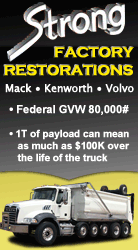
Select State
Federal Bridge Law
Federal regulations limit vehicle size and weight on federal highways. This includes all interstate highways across the country, as well as other federal roads designated within the National Highway System or National Network.
Vehicle Weight Limits
Federal weight limits of vehicles and axle loading limits are governed by the Federal Bridge Law (FBL), which has four primary rules:
- The maximum weight allowed on a single axle is 20,000 lbs
- The maximum total weight allowed on any two consecutive axles spaced eight or fewer feet apart (like tandem axles) is 34,000 lbs
- The maximum allowed Gross Vehicle Weight (GVW), or the maximum allowed total weight on any group of consecutive axles on a vehicle, is determined by the Federal Bridge Formula (FBF).
- The maximum Gross Vehicle Weight (GVW) on Interstate highways is 80,000 lbs, even when the result of the formula is greater.
The Federal Bridge Formula (FBF)
W = [ ( (LN) / (N - 1) ) + 12N + 36 ]
- W = the maximum allowed total weight in pounds for all axles in the group (rounded to the nearest 500 lbs, and rounding down when right in the middle - i.e. 62,250 lbs rounds to 62,000, while 62,300 lbs rounds to 62,500)
- L = the length or distance in feet (rounded to the nearest foot) from the center of the forward-most axle in the group to the center of the rear-most axle in the group
- N = the total number of axles in the group
Essentially, the Federal Bridge Formula allows a vehicle to weigh more when there are more axles and/or there is more distance to spread its weight out.
The Federal Bridge Table
For convenience, the Federal Highway Administration published the Federal Bridge Table, which allows one to quickly lookup the federal maximum gross weight on a vehicle or group of consecutive axles, based on number of axles and overall axle length:Federal Bridge Law Examples
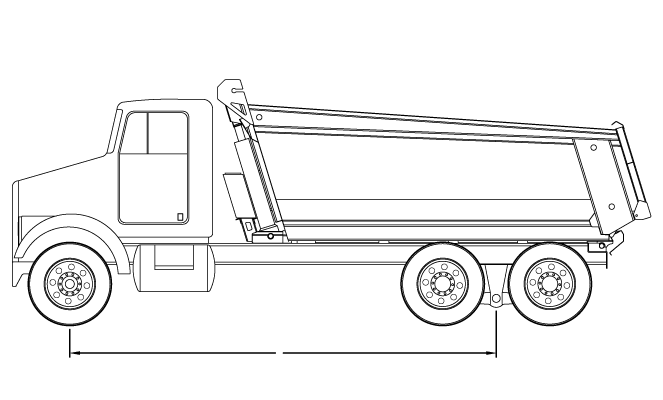
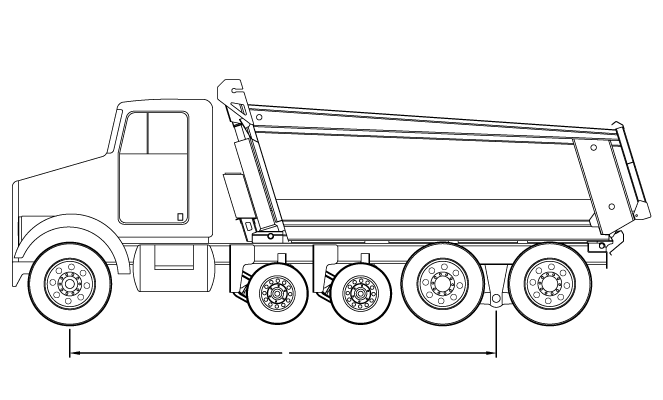
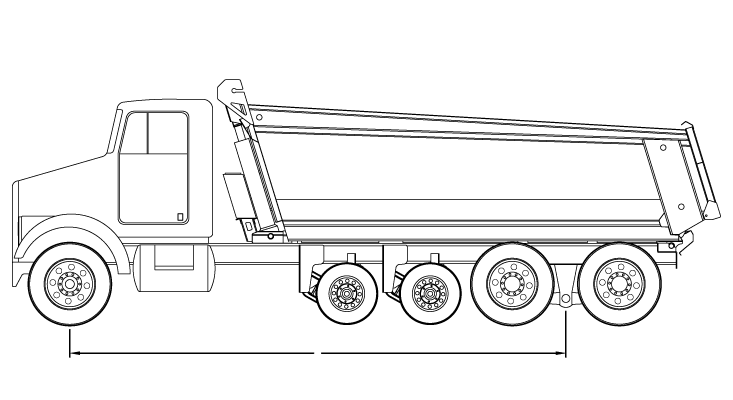
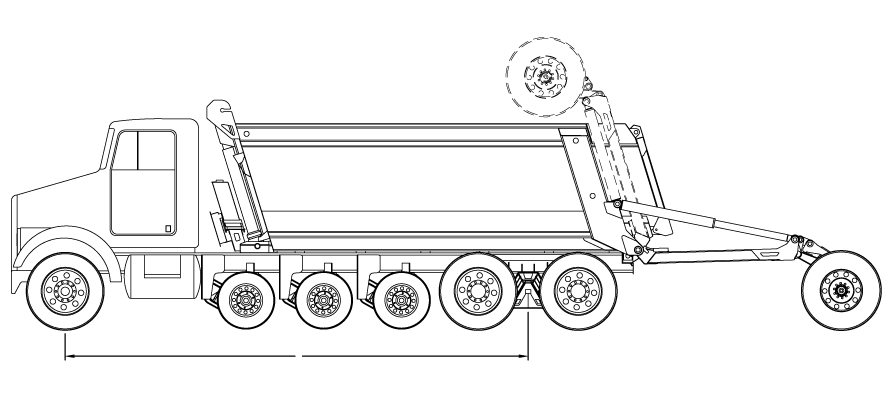
Vehicle Size Limits
Federal regulations limit vehicle size as follows:
- Width: The maximum width of a vehicle is limited to 102 inches
- Length: For straight trucks*, vehicle length is not federally regulated. This regulation is left to the individual states.
- Height: Vehicle height is not federally regulated. This regulation is left to the individual states.
California Bridge Laws
Notice: The Federal Bridge Law (FBL) and Federal Bridge Formula (FBF) apply to all interstate and federal highways across the nation, and many states have adopted them state-wide. We'll often refer to these federal regulations as simply "FBL" or "FBF". Expand the Federal Bridge Law panel above for detailed information on the federal regulations.
California Vehicle Weight Limits
Quick Summary / Synopsis for Dump Trucks
In California, a straight truck doesn't gain any additional weight allowance by adding any axles to the truck beyond the 4th axle. California's vehicle weight limits appear to be calculated based on the FBF, at least for straight trucks having two to four total axles, but that's not entirely the case. There's no actual formula declared in California's statutes (just the table in 35551.a, which you can find here on the CA.gov website), and the CA table doesn't exactly match the Federal Bridge Table even at three and four axles. Plus, when you look at the longer axle distances for trailers and combination vehicles, where the weight allowance does increase with five and even six axles, the weight increases seem almost random in several places, throwing the thought that it's strictly formula-driven out the window.
Recommendations
The important point to understand with California's weight laws as they concern straight dump trucks is this: You're limited to four total axles for any weight allowance benefit (it's not illegal to have more than four axles; you just don't increase your allowed vehicle weight beyond the 4th axle). This makes the California Super Dump (with the Strong Arm trailing axle being the 4th axle) easily the most productive straight dump truck in the state. As you can see below, a typical tri-axle dump truck with a 255-inch wheelbase is limited to 58,000 lbs. However, a 4-axle (California) Super Dump on the same wheelbase increases the limit to 66,000 lbs -- an increase of 4 Tons per trip. Any other option such as stretching the truck's wheelbase is futile, as you just give up maneuverability without gaining enough weight allowance.
Examples for California
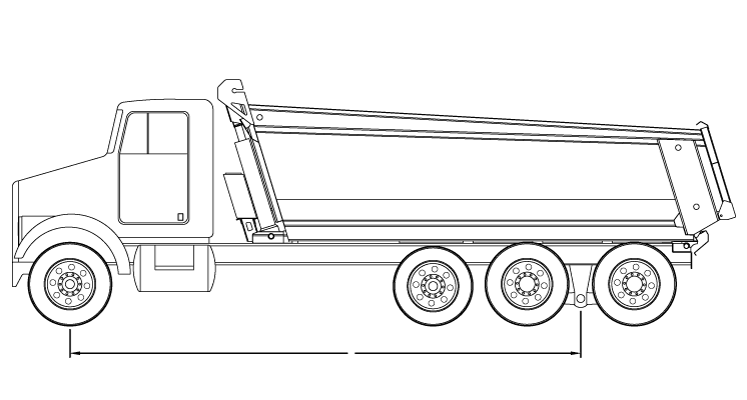
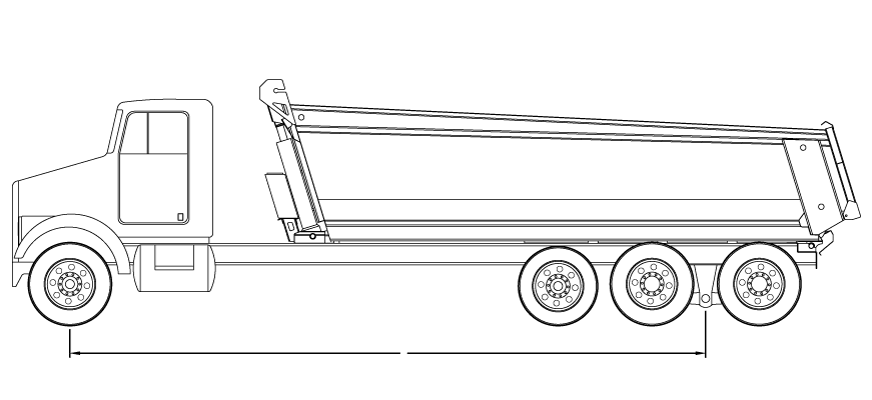
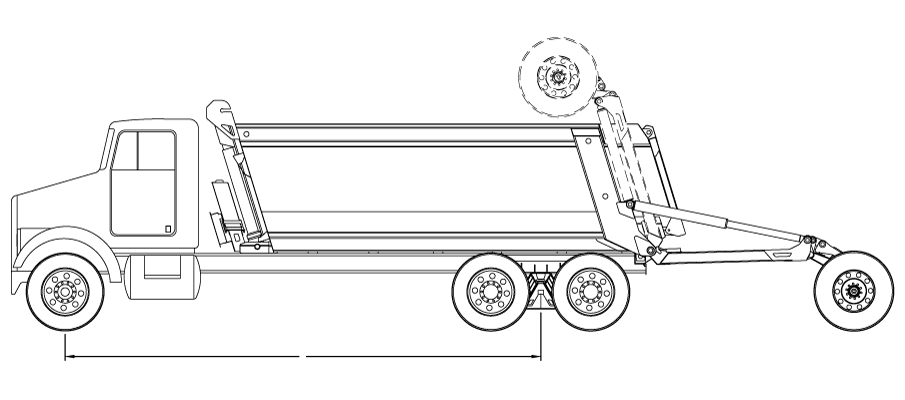
California Vehicle Size Limits
California has the following restrictions on vehicle size*:
- Width: The maximum width of a vehicle is 102 inches
- Length: The maximum length of a straight truck is 40 feet
- Height: The maximum height of a vehicle is 14 feet 0 inches
DISCLAIMER:
We try to stay accurate and up-to-date with any changes to the state weight laws, specifically as they pertain to dump trucks, utilizing resources from the Federal Highway Association, popular national vehicle weight guides and manuals, and the individual states' government websites and their official statutes. The weight laws within individual states can be complicated, however, especially when special permits, federal law grandfather rights, seasonal stipulations, and so forth are thrown into the mix. Our purpose here is to present each state's weight laws as they pertain to the typical dump truck, doing typical dump truck work, in the most common dump truck circumstances. If you have some special circumstance or scenario with your truck, we encourage you to visit your state's government website directly, or call your state Department of Transportation. Additionally, if you've discovered an error with our presentation of your state's laws, please let us know via our Contact Us Form and we'll make any necessary corrections immediately.
